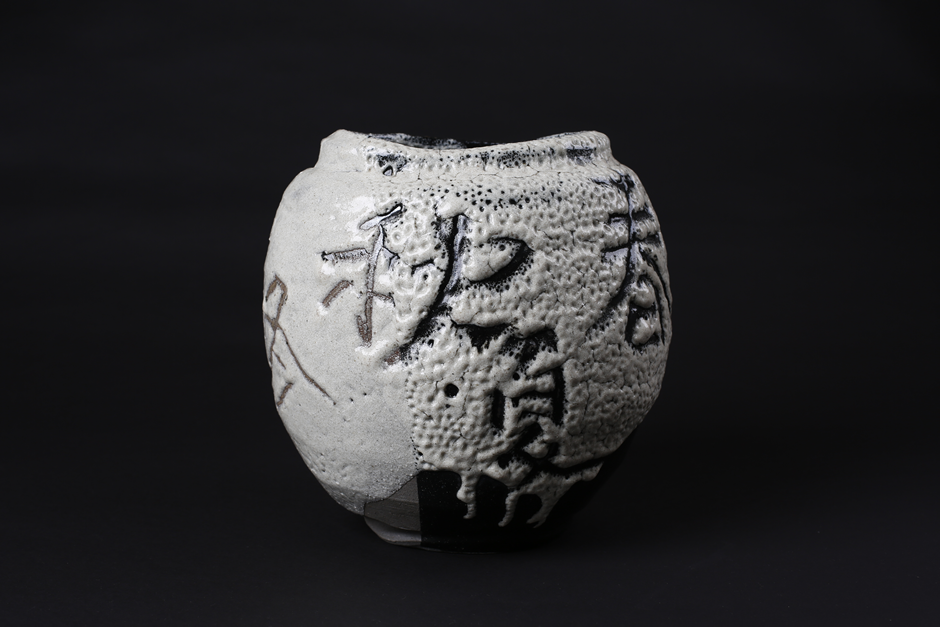
蓬莱掛分扁壺 春夏秋冬 W26.7cm D23.2cm H26.4cm 口径15.4cm 内径11.3cm


蓬莱掛分扁壺 春夏秋冬 W26.7cm D23.2cm H26.4cm 口径15.4cm 内径11.3cm
Shimizu Uichi
In 1926,Uichi Shimizu was born in Gojozaka,Kyoto as a first son of Unosuke Shimizu and Moto who were wholesaler of Kyo-ware ceramics. Although he was born in wholesaler family, he was attracted by pottery wheel, then he dropped out from Ritsumeikan Commercial School within 2 years, where he entered after he was separated from his father at age 11. He ended up studying under Souma Ishiguro who would become the Living National Treasure of Iron-glaze ceramics in his late age, but he gave up the training in a few months due to the social situation under the war. However, the days with Souma who had been admired Oriental ceramics correcting materials by himself for making glaze strongly influenced Uichi's pottery style.
As he set a pottery wheel place, he started his creation. Then he entered to National Ceramics Laboratory as a trainee in Kyoto. In 1943, he had worked as an assistant in the Department Ceramics, Municipal Kyoto Mechanical Laboratory while he left when the war ended and he had continued creation at home. In Kyoto where people take care of traditional family, Uichi felt uncomfortable surrounding by potters who were children of pottery masters. However in 1947, he established "Shikoukai" --an avant-garde potter group with fresh potters who were in the same situation. Then, he focused on his creation in order to make a new value in ceramics world after the War.
In 1951, he received the prize at 7th NITTEN for the first time, since then, he kept presenting his works till the 11th exhibition of 1955. In the same year, he presented to the 2nd Japan Traditional Crafts Exhibition by his teacher, Ishiguro’s recommendation. At the time, he had built his original style using persimmon-glaze and oil-glaze. He succeeded to fire Iron-glaze in oxidizing flame not in the normal term of reduction flame. It made possible to create subtle different colors because Iron-glaze would change to yellow,black,brown and reddish brown depend on amount of oxidizing iron. The works took the feature were praised both of Japan and foreign countries. In 1957, after he became an official member of Japan Crafts Association, he received loads of prizes such as The Encouragement Award of 5th, The Award of the president of Japan Crafts Association. Moreover, in international exhibitions, he had constantly made great records which were unforgettable in history including the Grand Prix at the Brussels world Expo in 1959.
In 1970, he opened a kiln in the bottom of Hourai Mountain in Shiga-Chou, Shiga. It was named "Hourai-kiln” installed a gas kiln too, he moved to live there. The moving became his turning point so as that he made himself to challenge exploring new glazes and making materials by himself. In 1973, he received 20th Anniversary Prize at 20th Japan Traditional Crafts Exhibition due to his reputation of "Blue Kawara big bawl" which used original solid of Hourai and his dedication so far. In 1985, he was designed as Living National Treasure possessing the important intangible cultural property "Iron-glaze Ceramic" as the second person followed Souma. He had kept his desire for discovery and creativity even in his late age. Also he let followers use Hourai Kiln while showing his attitude taking care of the piles of his works one by one as just a potter and he had tried to tell his policy to the next generation until he had gone.